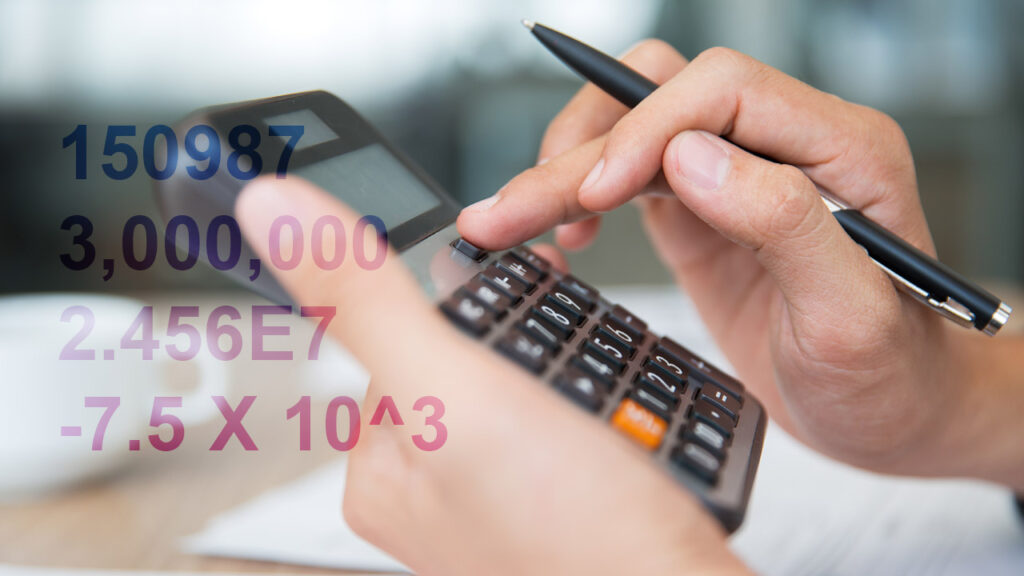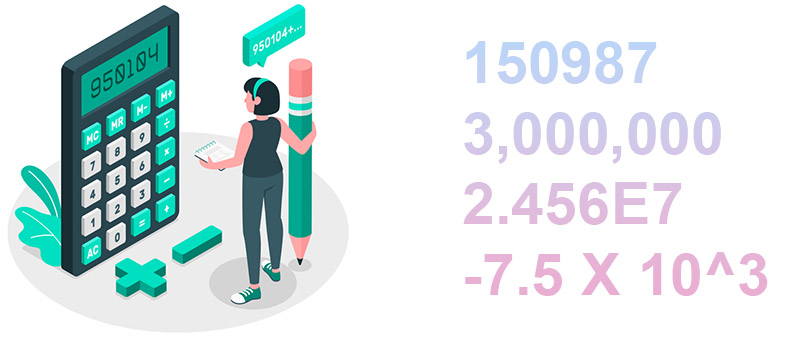Significant Figures Calculator – Precision at Your Fingertips

Table of Contents
In the worlds of math, science, and engineering, being precise isn’t just something nice to have—it’s absolutely essential. It’s the bedrock that supports everything else, ensuring that our calculations and measurements can be trusted and are accurate. Enter the Significant Figures Calculator from Calculator.io. This nifty tool is all about making sure you can achieve that level of precision without breaking a sweat. In this guide, we’re going to explore what makes this calculator so valuable, how it works, and why it’s something you’ll want to keep at your fingertips for all kinds of calculations.
Understanding Significant Figures
When we talk about significant figures, we’re really talking about the heartbeat of precision in any numerical value. It’s not just about the numbers themselves but what they represent in terms of accuracy and detail. Significant figures include all the non-zero digits, any zeroes nestled between non-zero digits, and those trailing zeros in a decimal number that signal precision. Take the number 103.00, for example. Each of the five digits plays a crucial role, telling us not just about quantity but about the certainty of that measurement.
But why do we care so much about significant figures? It’s because they are at the core of reliability in scientific, engineering, and mathematical calculations. Imagine you’re a scientist measuring a chemical solution or an engineer calculating the load a bridge can handle. The precision of your measurements can have real-world implications, from the safety of structures to the effectiveness of medications.
Significant figures help us communicate the accuracy of these measurements. They tell us how much confidence we can have in the numbers we work with and, by extension, the decisions we make based on those numbers. When we perform calculations, sticking to the correct number of significant figures is more than a mathematical exercise; it’s a commitment to precision that ensures the integrity of our results. This discipline allows us to compare different measurements meaningfully, understanding the nuances of variation and the significance of similarities.
The practice of using significant figures teaches us about the limitations and potential of our measurements. It reminds us that every measurement has a boundary of precision, influenced by the tools we use and the conditions under which we measure. Recognizing and respecting these boundaries is essential for advancing scientific knowledge, engineering innovation, and mathematical understanding.
Significant figures are a language of precision. They enable us to articulate the accuracy of our measurements with clarity and confidence, ensuring that our work stands on a foundation of reliability. Whether we’re calculating the trajectory of a spacecraft, determining the dosage of a drug, or estimating the materials needed for a construction project, significant figures are our allies in the pursuit of precision. They are the silent guardians of accuracy, the unsung heroes of measurement, ensuring that every digit counts and every measurement matters.
How the Significant Figures Calculator Calculator Works
Diving into the world of the Significant Figures Calculator, we uncover a tool designed with simplicity and versatility at its core. This isn’t just any calculator; it’s a precision-focused ally in the numerical realm, adept at rounding numbers to your specified level of significant figures. Whether you’re dealing with the straightforwardness of standard number formats, the complexity of scientific notation, or the precision of e-notation, this calculator is ready to become your go-to tool.
Imagine you’re working on a project that requires absolute precision in measurement and calculation. Here’s where the Significant Figures Calculator shines. It welcomes numbers in various formats, even allowing for the inclusion of commas to mark thousands — a nod to its user-friendly design, though such formatting isn’t a necessity for its operation.
Using the calculator is as straightforward as it gets. Enter your number — be it a simple integer, a decimal requiring precise measurement, or a complex scientific figure — and specify how many significant figures you need. With a click on “Calculate,” the calculator springs into action. It’s capable of handling an impressively wide range of numbers, up to 30 symbols, and can round these numbers to as many as 15 significant figures. This cap ensures that the calculator remains both powerful and practical for most applications.
But what truly sets this calculator apart is its underlying philosophy. It’s not just about getting to a result; it’s about achieving precision with ease. The calculator is designed to be intuitive, removing barriers between the user and their need for accurate calculations. Whether you’re a student grappling with the fundamentals of chemistry, an engineer calculating material stress limits, or a researcher analyzing data sets, this tool is designed to streamline your work without compromising on accuracy.
In essence, the Significant Figures Calculator is more than a tool; it’s a bridge to greater accuracy and reliability in your calculations. Its design acknowledges the diverse needs of its users, offering a straightforward path to achieving precise results. It’s a testament to the idea that in the world of mathematics, science, and engineering, precision should be accessible, not elusive. With this calculator, precision is indeed at your fingertips, ready to enhance the integrity of your work with every click.
Rounding to Significant Figures
Rounding numbers might seem straightforward at first glance, but when it comes to maintaining the integrity of a number’s value, the process becomes an art form. This is where the Significant Figures Calculator shines, transforming the complex dance of digits into a graceful and precise maneuver. It’s not just about chopping off numbers or arbitrarily deciding what stays and what goes. Instead, this calculator introduces us to a thoughtful method of rounding that respects the original value’s essence while simplifying its representation.
At the heart of this process is an intuitive algorithm that delicately balances the need for simplicity with the imperative of accuracy. The calculator starts by asking us to define our mission: How many significant figures do we wish to retain? This decision is crucial because it sets the stage for how the rounding will unfold. Then, with the precision of a skilled craftsman, the calculator examines the digits of our number, paying special attention to the digit that sits on the threshold of our defined limit.
Here’s where the magic happens: If the digit immediately following our cutoff point is less than 5, the calculator decides to let the last significant digit stand proud, unchanged. It’s as if the calculator is saying, “This number is close enough to its original form; let’s keep it as is.” But if that next digit is 5 or higher, the calculator takes a bold step. It nudges the last significant digit up by one, a gentle but firm acknowledgment that we’re tipping closer to the next numerical milestone.
This method of rounding isn’t just about following rules; it’s about understanding the subtle interplay between numbers. It’s a recognition that every digit in a number has a role to play in conveying precision and meaning. By deciding when to hold a digit steady and when to elevate it, the Significant Figures Calculator ensures that every rounded number remains a faithful ambassador of its original value.
Rounding to significant figures with this calculator is a testament to the beauty of mathematical precision. It’s a process that respects the integrity of numbers, acknowledging their role as carriers of accuracy and truth. Whether we’re working with data that spans the cosmos or calculations that fit in the palm of our hand, this calculator reminds us that in the world of numbers, every digit has a story, and every rounding decision is a step toward clarity and understanding.
Practical Application and Examples

In the world of numbers, precision is not just a goal; it’s a necessity. Whether you’re a student, a professional, or just someone who loves the clarity that comes with accuracy, understanding how to use the Significant Figures Calculator can elevate your numerical game. This guide will walk you through the steps of using this tool, offer practical examples, and show you how to apply this knowledge in real-life scenarios. For those wondering how many sig figs calculator can handle or require for a specific calculation, this guide will illuminate the process and the principles behind it.
Getting Started with the Calculator
The Significant Figures Calculator is designed to simplify your calculations, ensuring that every number you work with is as precise as it needs to be. Here’s how to harness its power:
- Input Your Number: Start by entering the number you wish to round. This can be any figure up to 30 symbols in length. Whether it’s a straightforward number, something in scientific notation, or even e-notation, the calculator is equipped to handle it. And don’t worry about commas for thousands; the calculator understands them, but they’re not necessary for it to work its magic.
- Examples of Accepted Inputs:
- Plain numbers:
150987 - With commas:
3,000,000 - Scientific notation:
2.456e7 - E-notation:
-7.5 x 10^3
- Plain numbers:
- Choose Your Significant Figures: Decide how many significant figures are appropriate for your calculation. Keep in mind, the calculator can round your number to up to 15 significant figures, which is the maximum it supports.
The Essence of Rounding
Before diving deeper, let’s clarify what we mean by “rounding.” It’s the process of simplifying a number to make it easier to work with, without straying too far from its original value. For instance, rounding 1001 might give you 1000, and 6.999999 could round up to 7. This slight adjustment makes numbers more manageable while retaining their essence.
The Algorithm Behind the Scenes
Rounding with the Significant Figures Calculator involves a straightforward yet sophisticated algorithm:
- Identify the Desired Significant Figures: Determine how many digits you want to keep in your rounded number.
- Evaluate the Digits: Look at the digit immediately after your last significant figure. If this next digit is less than 5, your number stays the same. If it’s 5 or greater, you bump up the last significant figure by one.
Practical Examples
Let’s put theory into practice with a couple of examples:
- Rounding to Two Significant Figures:
- For
1015, rounding to two significant figures means keeping the10and turning the rest into zeros, resulting in1000. - For
876, we keep the8and round up because the digit after7(the second significant figure) is6, which is greater than5. Thus, we get880.
- For
Rounding Decimals
The same principles apply when rounding decimals. The key difference is how we treat trailing zeros. For example:
- Rounding
9.05675to Three Significant Figures: We keep the9.05and round up because the next digit (6) is greater than5, resulting in9.06. - Rounding
0.01234to Three Significant Figures: We keep the0.012and leave the last digit as is because the next digit (4) is less than5, resulting in0.012.
A Real-World Application: Calculating the Final Price
Imagine you’re buying a dress with a base price of $15, and there’s an additional income tax of 6.25%. To find out how much you’ll actually pay, you first calculate the tax:
- Tax Calculation:
6.25% of 15 = (15/100) × 6.25 = 0.9375
Then, add this to the base price to get the final price:
- Final Price Calculation:
15 + 0.9375 = 15.9375
Since we typically don’t deal with fractions of a cent in currency, rounding to two decimal places (or four significant figures in this case) gives us 15.94. So, if you pay with a $20 bill, you’ll receive $4.06 back in change.
Conclusion
The Significant Figures Calculator on Calculator.iO is a testament to the importance of precision in scientific and mathematical calculations. By providing a user-friendly interface for rounding numbers to the required number of significant figures, it ensures accuracy and reliability in data analysis and computation. Whether for academic, professional, or personal use, this calculator is an essential tool for anyone looking to achieve precision at their fingertips.